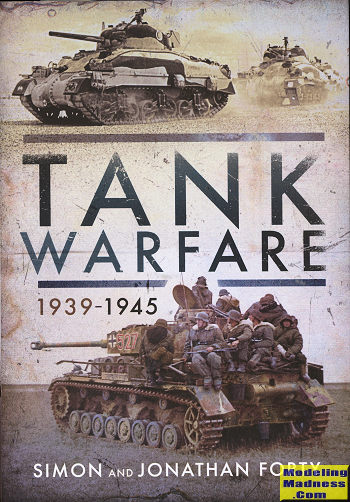 As many
of you are aware, the tank as we know it, was a development of WWI; an attempt
to break through the enemy's trenches. The vehicles of the day were fairly large
for the most part, and not very mechanically sound. However, they were fairly
well armed and most important, fairly well armored so that the scourge of the
battlefield, the machine gun, was generally unable to stop them.
As many
of you are aware, the tank as we know it, was a development of WWI; an attempt
to break through the enemy's trenches. The vehicles of the day were fairly large
for the most part, and not very mechanically sound. However, they were fairly
well armed and most important, fairly well armored so that the scourge of the
battlefield, the machine gun, was generally unable to stop them.
During that war, they were basically assistants to the
infantry and so the nations that continued to develop the tank, developed them
with that purpose in mind. However, there was really never any useful doctrine
provided on exactly how these tanks were to be used. Most simply assumed that
they would be sent in where needed to open a hole through which the infantry
would attack.
It is fairly interesting that the nation that really
developed a doctrine for tank warfare was a nation that after WWI was not
allowed to have them. This, of course, is Germany. Some German officers spent
their 'tankless' years developing doctrine for the use of tanks. Guderian was
one who realized the tanks needed to operate in conjunction with infantry as
infantry kept the other guys away from their tanks while tanks helped infantry
move forward. It was also seen that the best way to use tanks was en masse with
tanks breaking through the enemy defenses and creating havoc behind the lines.
The Soviets were also big on this later in the war when their tank guys were
able to get the upper hand.
In Britian and France, WWI experiences shaped their tank
building. The French had very good tanks, but poor leadership. The British had
tanks that were generally under gunned and had poor reliability. In the US,
tanks were pretty well forgotten until the years before the war. They were seen
as means of reconnaissance for cavalry units and it wasn't until US tank
officers read and understood the German approach that they finally got things
right. Patton's name sticks out for most as he was the most vocal proponent.
In this book, we see how each nation's armor arms
developed and how their strategy and tactics changed as the war situation
evolved. The book looks at the major areas of combat, mainly North Africa,
Soviet Union, Italy, Western Europe and the war against Japan. In addition,
there are numerous appendices that look at a wide range of things such as guns,
anti-tank warfare, repair and maintenance, tank radios, bridges and bridglayers,
and amphibious tanks. There are also sections on stats and production that many
will find interesting.
In all, it is a very well rounded book in with the
authors have put a lot of thought. It is a great read, especially for those who
want to know more about the subject and how the various tank arms developed and
operated. Lots of great photos, too. This is one which I very much enjoyed
reading and can quite easily recommend to you.
January 2021
Copyright ModelingMadness.com. All rights reserved.
Review book courtesy of
Casemate Publishing.
Get your copy
here.
If you would like your product reviewed fairly and
fairly quickly, please
contact
me or see other details in the
Note to
Contributors.
 As many
of you are aware, the tank as we know it, was a development of WWI; an attempt
to break through the enemy's trenches. The vehicles of the day were fairly large
for the most part, and not very mechanically sound. However, they were fairly
well armed and most important, fairly well armored so that the scourge of the
battlefield, the machine gun, was generally unable to stop them.
As many
of you are aware, the tank as we know it, was a development of WWI; an attempt
to break through the enemy's trenches. The vehicles of the day were fairly large
for the most part, and not very mechanically sound. However, they were fairly
well armed and most important, fairly well armored so that the scourge of the
battlefield, the machine gun, was generally unable to stop them.